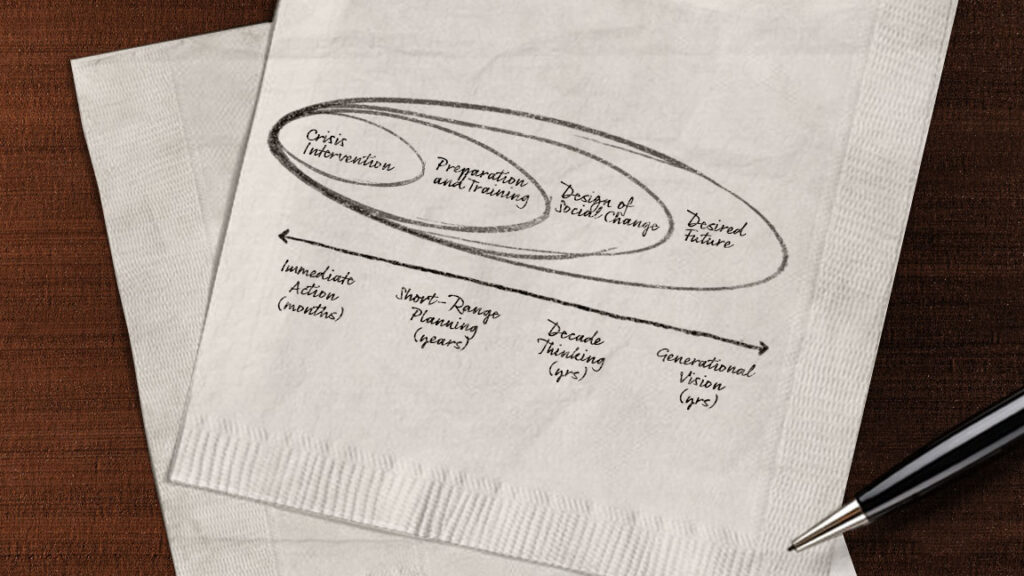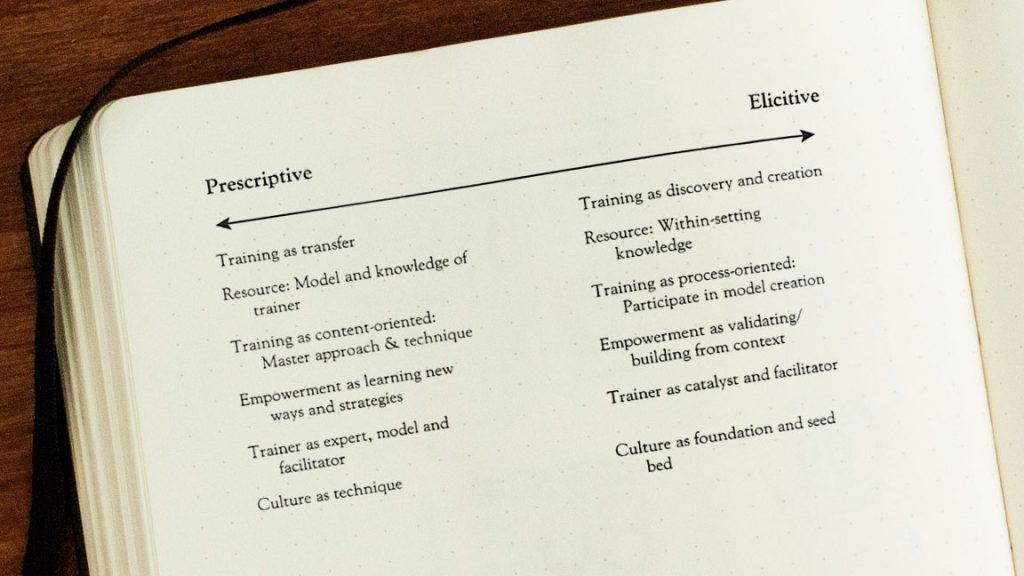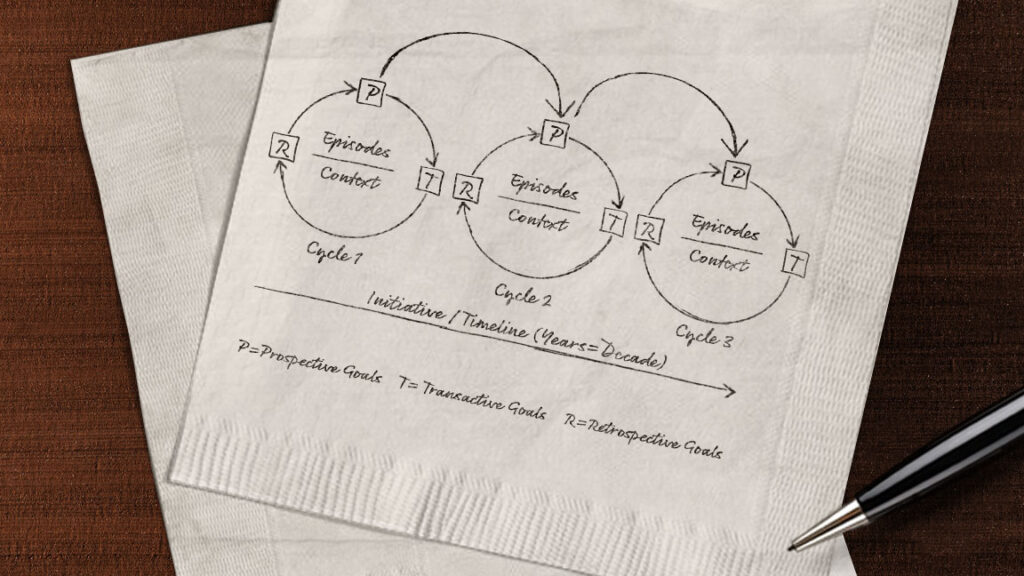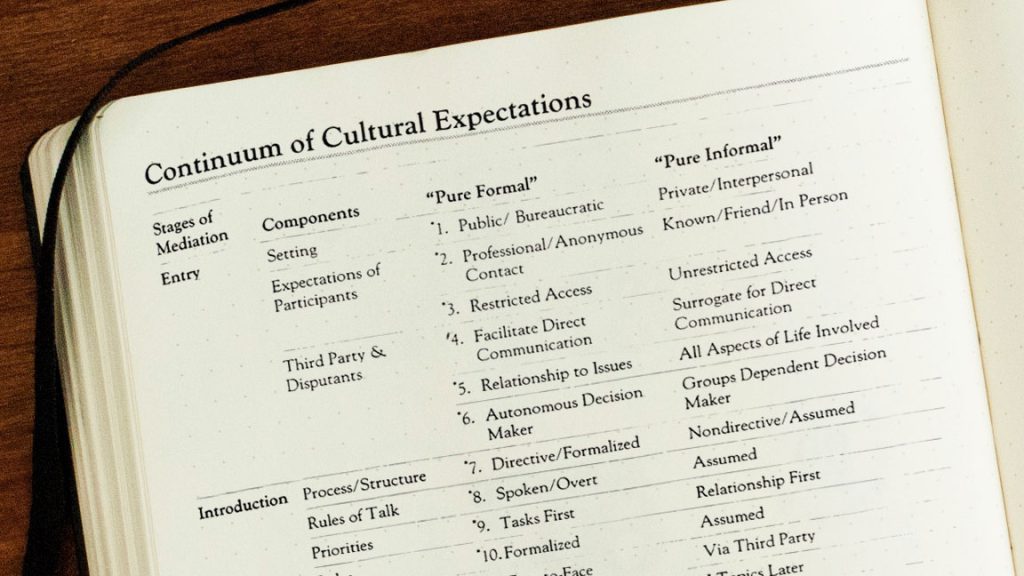
The process of building peace must rely on and operate within a framework and a time frame defined by sustainable transformation. In practical terms, this necessitates distinguishing between the more immediate needs of crisis-oriented disaster management in a given conflict setting and the longer-term needs of constructively transforming the conflict.
The nested paradigm demonstrates that we must response to immediate crises in a manner that is informed by a longer-term vision. Our capacity to respond to the short-term agenda is more fully developed than is our capacity to take a longer-term view and see distant goals strategically reflected in our short-term action. I suggest that we cannot respond with quick fixes to situations of protracted conflict. We must think about the healing of people and the rebuilding of the web of their relationships in terms relative to those that it took to create the hatred and violence that has divided them.
Lederach, John Paul. “Figure 6. Nested Paradigm: The Time Dimension in Peacebuilding.” In Building Peace: Sustainable Reconciliation in Divided Societies, by John Paul Lederach. United States Institute of Peace Press, 1997.
Reproduced by permission of United States Institute of Peace Press.


